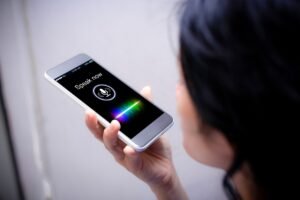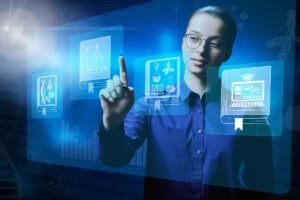In this post I will discuss about the power of Sensor Fusion in Robotics. If you have ever wondered how self-driving cars can “see” the road or how your phone detects motion so smoothly, it’s probably thanks to sensor fusion. So what exactly is sensor fusion? Let me break it down for you like we’re chatting over coffee.
Sensor fusion is all about combining data from multiple sensors to get a clearer, smarter understanding of the world. You do it every day without even noticing your brain takes in sights, sounds, smells, and more to create one complete picture of your surroundings. Computers and robots are now learning to do the same.
As someone who works in computational sensing, I design algorithms that take raw data sometimes it’s messy or incomplete and turn it into something meaningful for machines, or even for you as a user.
Table of Contents
Why Sensor Fusion Matters for Autonomous Vehicles
When it comes to autonomous vehicles, accurate sensing is everything. Imagine driving without knowing how far away the car in front of you is, or whether there’s a pedestrian around the corner. Yeah, that’s not gonna fly.
This is where sensor fusion becomes a game-changer.
A self-driving car or robot is equipped with multiple sensors each offering different strengths. Some see well in bright daylight, others are great at estimating depth, and some work perfectly in the dark.
When we combine these sensors intelligently, we can fill in the blanks and produce a much higher-quality understanding of the world around the vehicle. That’s what makes driving safe and reliable even in challenging environments like rain, fog, or nighttime.
Read More Computer Vision for Robotics in 2025 How Computers See the World
Types of Sensors Used in Sensor Fusion
Let’s look at some common sensors used in the field of autonomous systems and robot perception:
Camera Sensors
These are great for capturing high-resolution images. You and I love cameras because they show things clearly colors, textures, shapes. But they don’t tell you how far away something is.
Stereo Cameras
Put two cameras side by side, and boom you get stereo vision, which means depth perception. It’s similar to how your own eyes work.
LiDAR Sensors (Laser Scanners)
These shoot out laser beams and measure how long it takes for the light to bounce back. This gives super accurate distance data, even in total darkness. The downside? It’s low resolution and expensive.
Radar Sensors
Radars work on the microwave spectrum and can “see” through fog, rain, and even darkness. Your car’s adaptive cruise control probably uses this.
Combining Camera and LiDAR
Let’s talk real-world application. One of the coolest things I have worked on is blending camera data (which gives great visuals) with LiDAR data (which gives awesome depth).
Individually, these sensors have weaknesses:
- Cameras struggle at night.
- LiDAR gives limited visuals.
But together? They’re unstoppable.
You can combine a camera’s high-res imagery with the LiDAR’s depth accuracy to create a super sensor. Think of it like combining a painter’s eye with a surveyor’s precision. The result is richer, more actionable data for your robot, car, or device.
Radar, Audio & Microwave Sensors
Here’s the thing vision isn’t the only sense machines can use. We are also working with:
- Audio sensors to pick up sound cues.
- Microwave imaging (radar) to see things your eyes can’t.
Machines can turn this kind of invisible data into meaningful information. Just like how your brain makes sense of what you hear or smell, computers are starting to do the same.
Sensor Fusion in Everyday Devices
Now let’s bring it back home. This tech isn’t just for Teslas and Mars rovers. As sensor prices drop and processors get more powerful, you’ll start seeing sensor fusion in everyday stuff, like:
- Smartphones that use both cameras and depth sensors for better AR.
- Smart home devices that combine motion, light, and sound sensors for smarter automation.
- Health gadgets that track multiple body signals simultaneously.
Imagine your phone using multiple types of sensors to create perfect lighting for your video call pretty slick, right?
Read More Bias in AI and Heuristics in Decision-Making Systems in 2025
FAQs About Sensor Fusion in Robotics
Q. What is sensor fusion in simple terms?
Ans. It’s when a device uses multiple sensors to understand the environment better like combining camera and radar to detect objects more accurately.
Q. Is sensor fusion used in smartphones?
Ans. Yes! Your phone likely uses it for things like face unlock, AR filters, and location tracking.
Q. Why not just use one sensor?
Ans. Because each sensor has limits. Fusing data gives you the best of all worlds better accuracy, reliability, and safety.
Q. Can sensor fusion work in the dark?
Ans. Absolutely! That’s where sensors like LiDAR and radar shine. They don’t rely on light, unlike regular cameras.
Q. How is sensor fusion used in AI?
Ans. It helps AI models “see” the world more like humans do, especially in robotics, autonomous driving, and smart devices.
Conclusion
Sensor fusion isn’t just a tech buzzword it’s a big deal. It’s the bridge between raw data and real-world intelligence. Whether you are riding in a self-driving car or using your smart home devices, you are already benefiting from it.
And as these sensors get cheaper and more powerful, you can expect this tech to show up in everything from your phone to your refrigerator. As someone building algorithms in this space, I can’t wait to see where it goes next and how it will change your daily life.





Pingback: How Tactile Sensing in Robotics in 2025 is Revolutionizing Dexterous Manipulation - Pickn Reviews